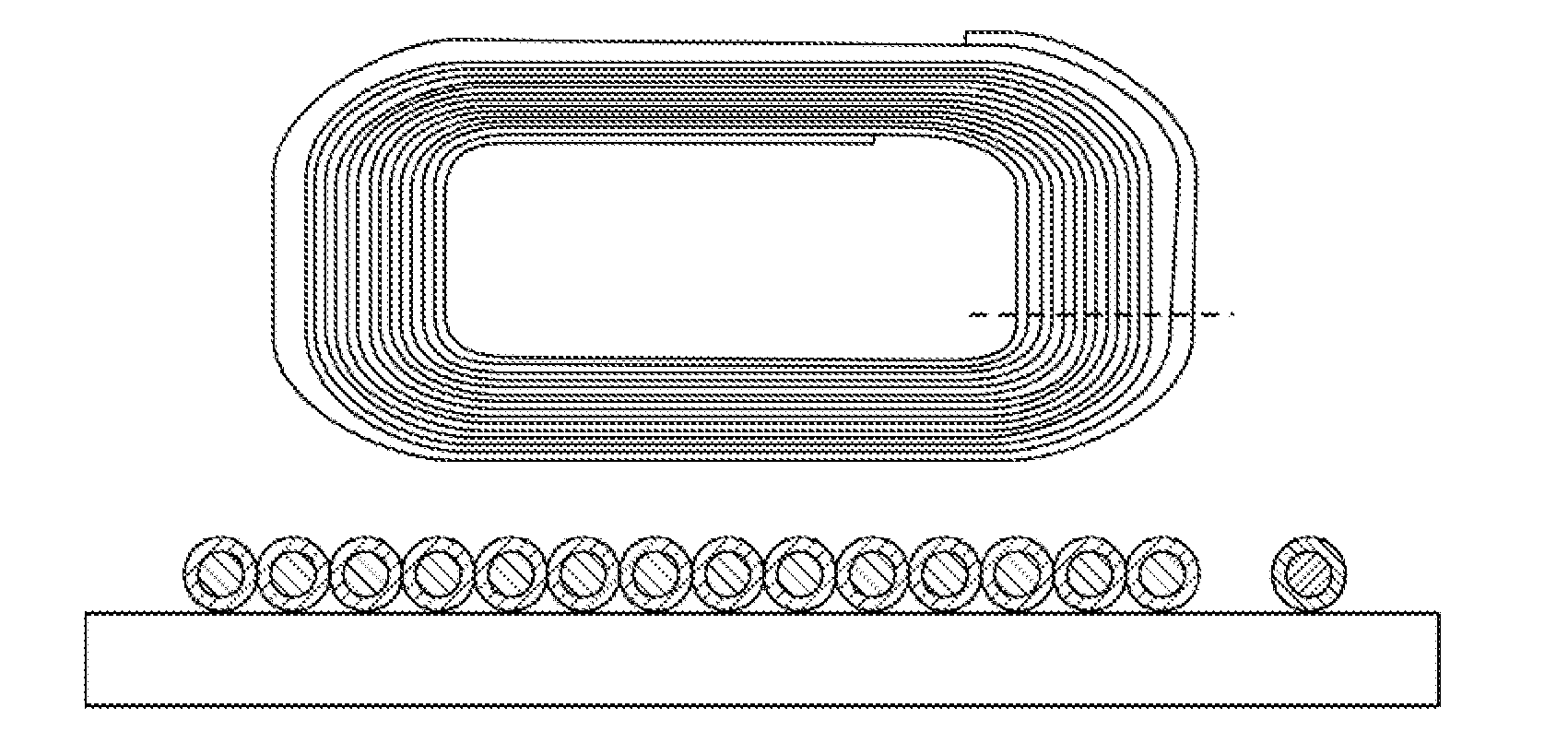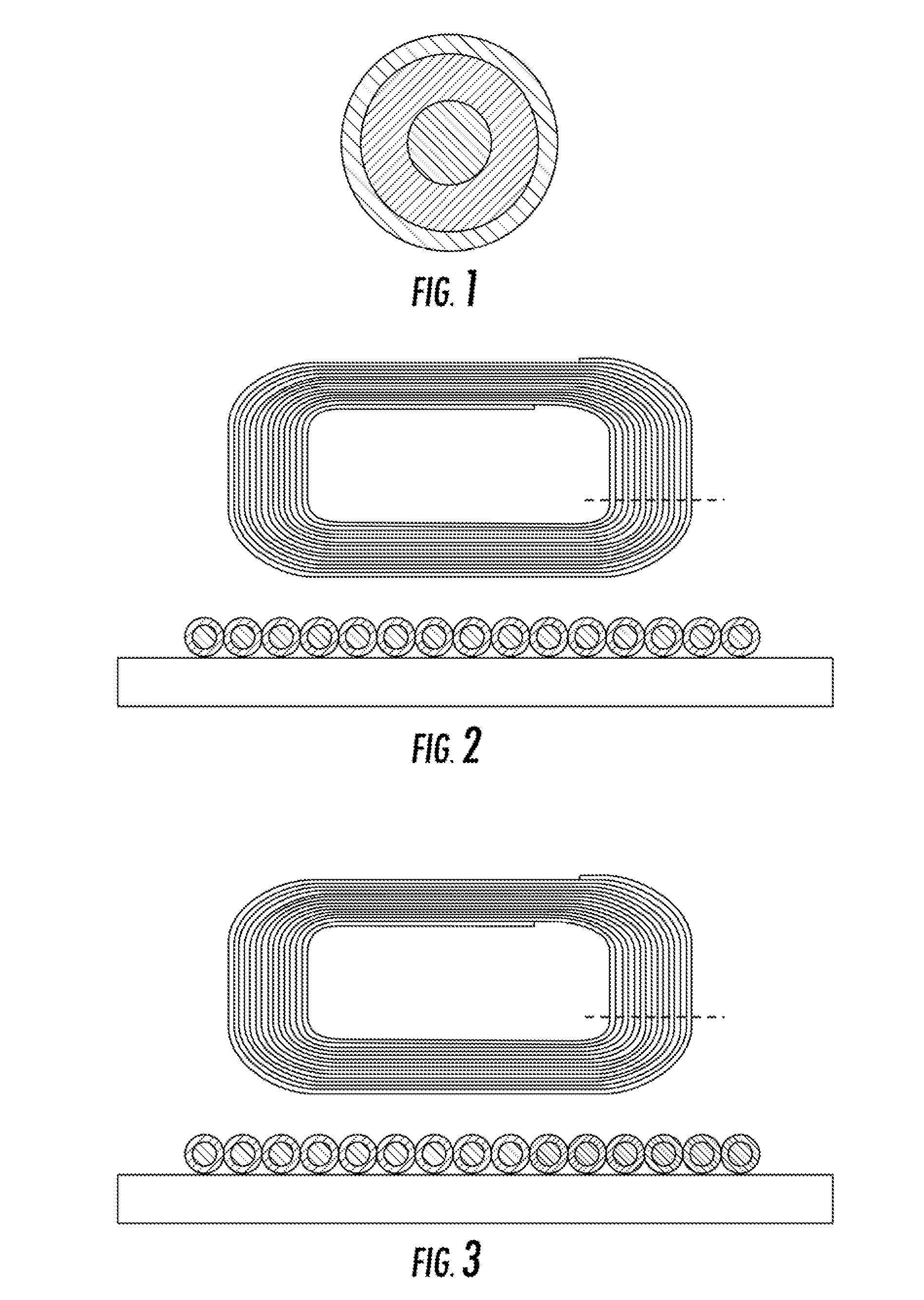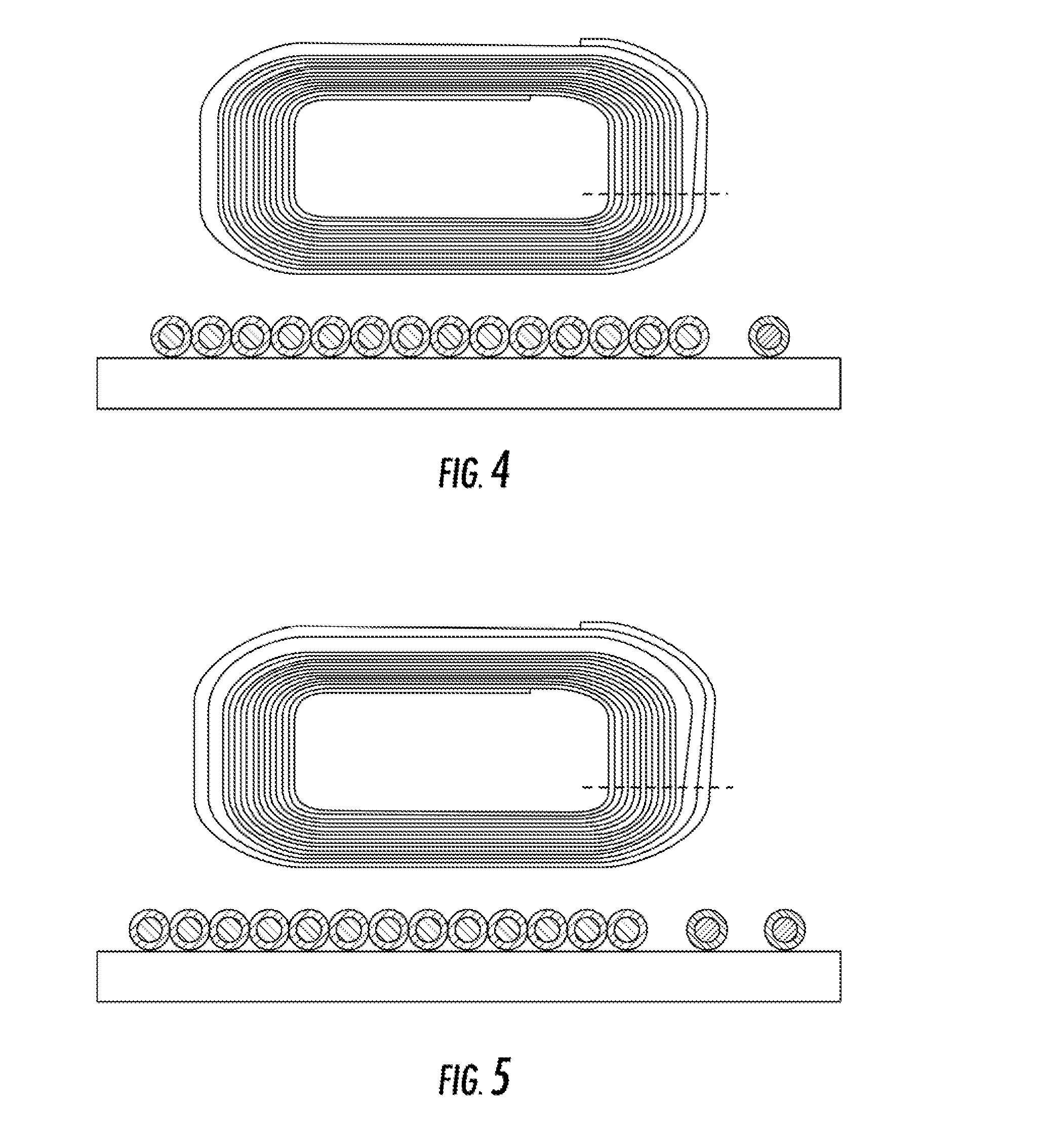Method and system for managing heat disipation in doped fiber
a technology of heat dissipation and fiber, applied in the direction of electrical equipment, active medium shape and construction, laser details, etc., can solve the problems of significant heating along the active fiber, low laser process conversion efficiency, and no longer guided light at high angles, so as to reduce the overall temperature, facilitate heat dissipation, and eliminate the effect of fiber crossover
- Summary
- Abstract
- Description
- Claims
- Application Information
AI Technical Summary
Benefits of technology
Problems solved by technology
Method used
Image
Examples
Embodiment Construction
[0028]Now referring to the drawings, the system for managing the heat dissipation and local thermal increases of an active, doped optical fiber that is being pumped by light source is shown and generally illustrated. The present invention may be implemented using a CW, a pulsed fiber light source, fiber laser or a fiber amplifier for the purpose of removing or redistributing heat from the doped / active optical fiber allowing it to operate at a lower temperature.
[0029]In a fiber laser, the optical fiber, as shown in FIG. 1, typically consists of three regions, a central core glass, a surround cladding glass and a 2nd cladding or “coating” (typically polymer or low index glass). The gain medium of fiber lasers is a length of an optical fiber, the core of which is doped with an active lasing material, typically ions of a rare earth element, such as Ytterbium, Erbium, Thulium, Praseodymium etc. The active elements are introduced during the optical fiber manufacturing process and are loca...
PUM
 Login to View More
Login to View More Abstract
Description
Claims
Application Information
 Login to View More
Login to View More - R&D
- Intellectual Property
- Life Sciences
- Materials
- Tech Scout
- Unparalleled Data Quality
- Higher Quality Content
- 60% Fewer Hallucinations
Browse by: Latest US Patents, China's latest patents, Technical Efficacy Thesaurus, Application Domain, Technology Topic, Popular Technical Reports.
© 2025 PatSnap. All rights reserved.Legal|Privacy policy|Modern Slavery Act Transparency Statement|Sitemap|About US| Contact US: help@patsnap.com



